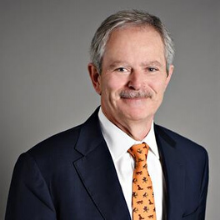- May 25, 2020
Bond Markets, New Risks and the Investing Challenges Ahead



The Global Risk Institute (GRI) recently hosted a members-only webinar with Jim Keohane, Former President & CEO of Healthcare of Ontario Pension Plan (HOOPP) as part of its “Managing Risk Through and After the Pandemic.”
Hugh O’Reilly, Executive in Residence at the GRI, moderated the event and asked Mr. Keohane about the impact of rapidly expanding government balance sheets on the fixed income market as well as which asset classes are most likely to underperform expectations in the years ahead.
At the outset Mr. O’Reilly addressed the elephant in the room by asking Mr. Keohane why would any institutional investor own a bond today? He responded by noting that bonds still provide diversification and pension funds would own bonds for principle protection. He did note that negative interest rates create a built-in loss and rates have nowhere to go but up.
“They don’t provide any income,” said Mr. Keohane. “If you invest in long-term bonds you can guarantee that you won’t meet your investment objectives. The fundamentals are very unattractive.”
Mr. O’Reilly asked: “How do you see these low bond rates affecting discount rates?”
Mr. Keohane also noted that with zero interest rates the valuation models are effectively broken, and that central bank activity has influenced the supply/demand fundamentals of bonds.
On the subject of deflation, Mr. Keohane noted you can make a case for deflation and inflation but it will surely be deflation in the short term as it will take time for some industries to come back, such as travel and restaurants.
The case for inflation is that all of the extra money put into the system will be chasing the same things so that pushes up prices. It is possible that the fundamentals that caused inflation in the ‘70s and ‘80s could re-establish themselves. Mr. Keohane also noted that with the rise of “localization” supplanting globalization it will drive up prices as increased bargaining power will push up wages because of the number of local jobs.
When asked if bonds are not attractive how will institutional investors replace bonds in the portfolio, Mr. Keohane said that they will have to move up the risk curve and explore structured credit products and the proper use of derivatives as a risk management tool. He also noted that certain areas in real estate and infrastructure could be attractive and can be added to a basket of high-yielding equities.
“There are ways to get returns without going too far up the risk curve,” he added.
The subject then turned to how institutional investors should be thinking about liquidity management. Mr. Keohane noted that in 2008 the people with liquidity did well while those who did not had to sell things they didn’t really want to sell, and this gave liquidity providers some attractive prices. The current government interventions have essentially prevented the same kind of attractive pricing to emerge.
One viewer asked “the COVID-19 pandemic is creating another perfect storm for pension funds and how will pension liabilities and solvency ratios of the large defined benefit plans look like at the end of 2020?” Mr. Keohane explained that they will go down and they will also have to draw down some assets. He also noted that the expectations built into the discount rates will mean you will need to earn five or six per cent returns for things just to stay on an even keel.
When asked about green bonds, Mr. Keohane felt they were already premium priced because of the reasons people buy them, and that you can still get better returns elsewhere.
Another listener asked about valuations of commercial real estate in downtown Toronto, and Mr. Keohane noted that before the pandemic there was zero availability, and that many people had to work from home because there was not enough space. When it becomes possible, people will return to the face-to-face interactions that were there in the past because people like the social aspect of work.
Mr. Keohane wrapped up the discussion by saying that this economic disruption was quick, with no warning and had a broad-based impact and is creating long-term damage. Central bank intervention is masking some things, such as interest rate differential, and the markets are not reflecting the true economic damage that has been done.
“I would be cautious,” he said.

Jim Keohane
Former President & CEO, Healthcare of Ontario Pension Plan (HOOPP)